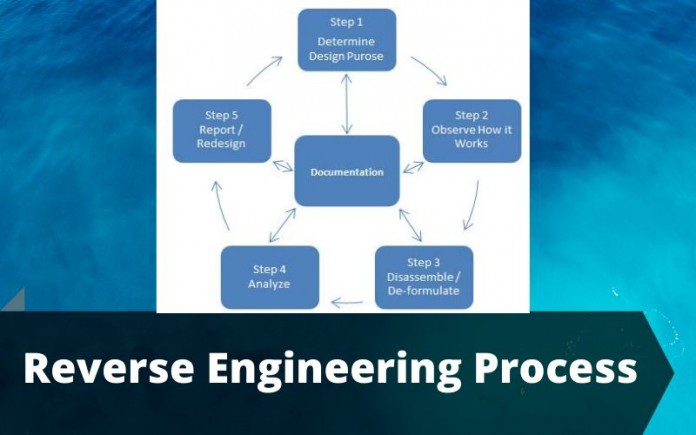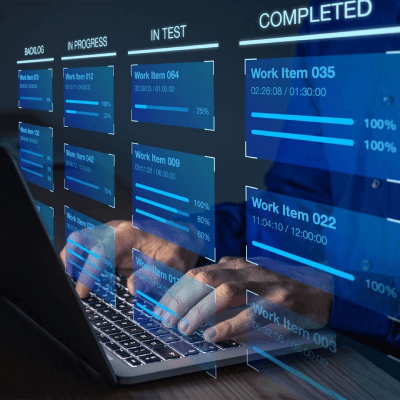Reverse Engineering Process
In my previous blog I had given you an intro to Reverse Engineering but, In this blog, we are going to discuss the Reverse Engineering Process and the reasons for reverse engineering. To get the best out of this blog you need to read my previous blog.
Reverse engineering is very common in such diverse fields as software engineering, entertainment, automotive, consumer products, microchips, chemicals, electronics, and mechanical designs. In many situations, designers use CAD models, clay, plastic, wood, etc. But, a CAD model is required to give shape to there design.
The original manufacturer stop produces the product, inadequate documentation, some bad feature of product need to redesign it again, to analyze good and bad features of competitor products and methods to understand competitor products and develop a better product. To Learn about reverse engineering and deep learning concept visit Easyshiksha Online Courses.

Important Announcement – EasyShiksha has now started Online Internship Program “Ab India Sikhega Ghar Se”

The Steps of Reverse Engineering process includes
1.Collection Information:
This step focuses on collecting all possible information about the software, the purpose, how does it work, design documentation, etc.
2.Examining the information:
Now we need to observe and examine the working of product, meeting design objectives.
3.Extracting the structure:
This step concerns with identification of program structure in the form of a structure chart where each node corresponds to some routine. We need to disassemble and examine the different parts.
4.Recording the functionality, data flow, and control flow:
During this step processing details of each module of the structure, charts are recorded using structured language like decision table, etc.
From the information get after extracted the structure and functionality, a set of data flow diagrams are derived to show the flow of data among the processes and after this High-level control structure of the software is recorded.
5. Review and analyze the extracted design:
Design document extracted is reviewed several times to ensure consistency and correctness. It also ensures that the design represents the program.
6.Generate documentation:
After analyzing and carefully resemble the product the complete documentation including SRS, design document, history, overview, etc. are recorded for upgrades and changes.
Top Courses in Software Engineering
I hope to know you understand the steps involve in Reverse Engineering Process and to learn more tech blogs like this visit HawksCode and Easyshiksha.
Empower your team. Lead the industry
Get a subscription to a library of online courses and digital learning tools for your organization with EasyShiksha
Request NowQ. Are EasyShiksha's internships truly free?
Yes, all internships offered by EasyShiksha are completely free of charge.
Q. How can I apply for an internship with EasyShiksha?
You can apply by visiting our website, browsing available internships, and following the application instructions provided.
Q. What types of internships are available through EasyShiksha?
EasyShiksha offers a wide range of internships across technology, business, marketing, healthcare, and more. Opportunities are continuously updated.
Q. Will I receive a certificate upon completing an internship?
Yes, upon successful completion, you will receive a certificate recognizing your participation and achievements.
Q. Are EasyShiksha's internship certificates recognized by universities and employers?
Yes, the certificates are recognized by universities, colleges, and employers worldwide.
Q. Is the download of certificates free or paid?
Access to internships and courses is free, but there is a small fee to download certificates, covering administrative costs.
Q. When can I start the course?
You can choose any course and start immediately without delay.
Q. What are the course and session timings?
These are fully online courses. You can learn at any time and pace. We recommend following a routine, but it depends on your schedule.
Q. What will happen when my course is over?
After completion, you will have lifetime access to the course for future reference.
Q. Can I download the notes and study material?
Yes, you can access and download course materials and have lifetime access for future reference.
Q. What software/tools would be needed for the course?
All necessary software/tools will be shared during the training as needed.
Q. I’m unable to make a payment. What should I do?
Try using a different card or account. If the problem persists, email us at info@easyshiksha.com.
Q. Do I get the certificate in hard copy?
No, only a soft copy is provided, which can be downloaded and printed if required.
Q. The payment got deducted but shows “failed”. What to do?
Technical errors may cause this. The deducted amount will be returned to your account in 7-10 working days.
Q. Payment was successful but dashboard shows ‘Buy Now’?
Sometimes payment reflection is delayed. If it takes longer than 30 minutes, email info@easyshiksha.com with the payment screenshot.
Q. What is the refund policy?
If you face technical issues, you can request a refund. No refunds are issued once the certificate has been generated.
Q. Can I enroll in a single course?
Yes, select the course of interest, fill in the details, make payment, and start learning. You will also earn a certificate.
Q. My questions are not listed above. I need further help.
Contact us at info@easyshiksha.com for further assistance.
ALSO READ: in-times-of-corona-wealth-clinic-comes-up-with-earning-opportunity
Get Course: Google-Adwords-for-Beginners



































































